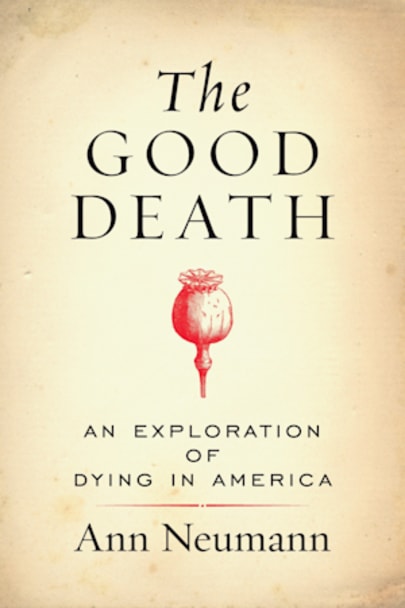Following the death of her father, journalist and hospice volunteer Ann Neumann sets out to examine what it means to die well in the United States.When Ann Neumann’s father was diagnosed with non-Hodgkin’s lymphoma, she left her job and moved back to her hometown of Lancaster, Pennsylvania. She became his full-time caregiver—cooking, cleaning, and administering medications. When her father died, … her father died, she was undone by the experience, by grief and the visceral quality of dying. Neumann struggled to put her life back in order and found herself haunted by a question: Was her father’s death a good death?
The way we talk about dying and the way we actually die are two very different things, she discovered, and many of us are shielded from what death actually looks like. To gain a better understanding, Neumann became a hospice volunteer and set out to discover what a good death is today. She attended conferences, academic lectures, and grief sessions in church basements. She went to Montana to talk with the attorney who successfully argued for the legalization of aid in dying, and to Scranton, Pennsylvania, to listen to “pro-life” groups who believe the removal of feeding tubes from some patients is tantamount to murder. Above all, she listened to the stories of those who were close to death.
What Neumann found is that death in contemporary America is much more complicated than we think. Medical technologies and increased life expectancies have changed the very definition of medical death. And although death is our common fate, it is also a divisive issue that we all experience differently. What constitutes a good death is unique to each of us, depending on our age, race, economic status, culture, and beliefs. What’s more, differing concepts of choice, autonomy, and consent make death a contested landscape, governed by social, medical, legal, and religious systems.
In these pages, Neumann brings us intimate portraits of the nurses, patients, bishops, bioethicists, and activists who are shaping the way we die. The Good Death presents a fearless examination of how we approach death, and how those of us close to dying loved ones live in death’s wake.
more



3 stars – I liked it
In The Good Death, journalist and hospice volunteer Ann Neumann examines what it means to die in the United States. She discusses end-of-life care, right to die, medical ethics, starvation deaths, and other aspects of what it could mean to die in America.
This book was very interesting because it looks at how your wishes for death may not always happen, even if you have the paperwork to prove that is your wish. I found the discussions of how hospitals can easily ignore your wishes, especially if you end up brain dead or on incubators to live. Even if your legal guardian shows proof that you want the plug pulled, organizations and even the hospitals will use whatever means they can to prevent it, like in the Terri Schiavo case.
I learned a lot from this book about right-to-die legislation, starvation deaths, and other legal aspects of dying. It really shows me that I need to start on a will and death care paperwork as soon as possible because you never know when an accident might happen. I do have a few issues with some of the discussions in this book. This book doesn’t really go into statistics or experiences of the BIPOC since all her in depth discussions are about cases involving white people.
Another issue was that she discussed a confrontation she had with a disabled blogger who was against her views because he was concerned about his personal safety when it came to right-to-die legislation. They do meet and form a friendship, but her tone and discussion of this man, and other disabled people, was very ablest and at times very negative. She never seemed to understand the blogger’s concern about her views, which was disappointing considering she became friends with him.
My last issue with this book was in Chapter 8, she discussed meeting an inmate through hospice and that he sent her a letter about his experiences and life since their meeting. He asks her to reply but she wouldn’t respond to him. I understand that a nurse told her that inmates wouldn’t be able to get letters but she never confirms that with the actual rules of the prison. She then goes on to discuss the compassion needed for dealing with end-of-life patients but still refuses to try to write to the one prisoner who was reaching out to her. It was very jarring to see her preach about compassion but ignore someone who was reaching out for it.
Overall, this was an interesting book but it does have its flaws. I learned a lot about end-of-life care and legislation but this is only a tiny portion of what the health care system is like. I would really love to see a follow up book, or another author, write about BIPOC experiences and disabled experiences. If this book is already written, please let me know because I would love to read it.
This is creative non-fiction that examines how our society treats death. The author weaves in accounts of her own experience when her father was dying of cancer and those stories of others that she met while working as a hospice volunteer. A worthwhile read that is at some point applicable to everyone..